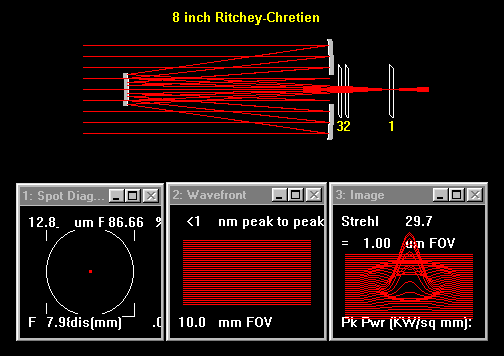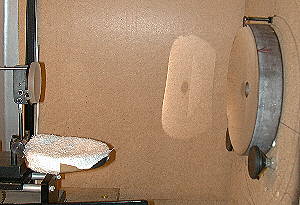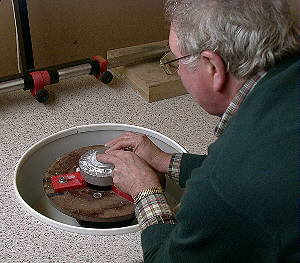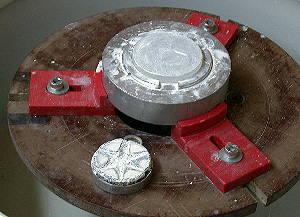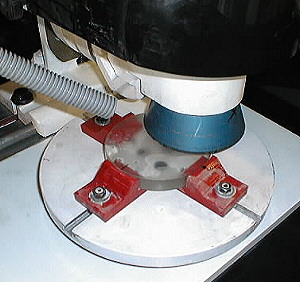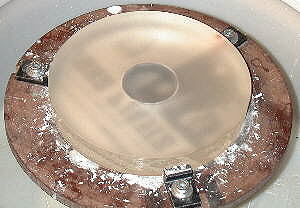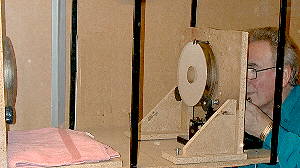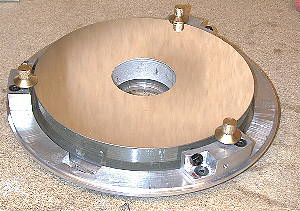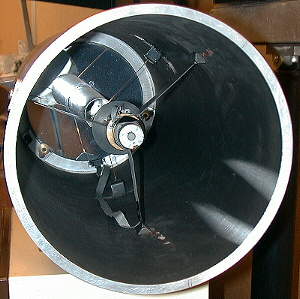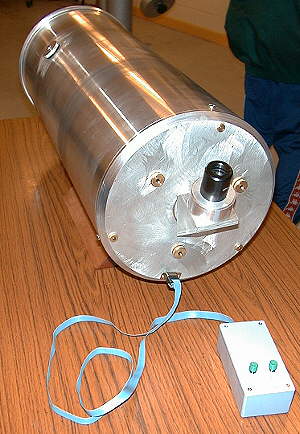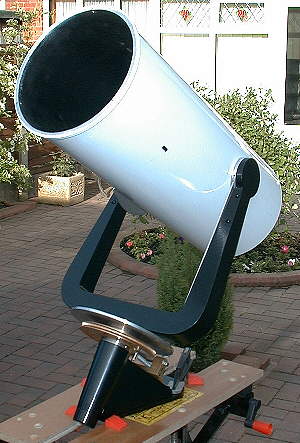|
The construction of the tube assembly is now well underway.
A 10 inch diameter extruded aluminium tube was located in
a scrap yard. It was a bit too thick so
Brian turned it down to just under a 3mm thick wall. Plenty strong enough.
The back plate is fairly simple as the secondary will move for focusing.
It was machined to fit and a bevel put -
similar to how Celestron finish their tubes.
The seconary spider is three-vaned and as well as the mirror it caries the
12 volt intrument motor for moving it back and forward for focusing.
Unusually Brian went for a 110 degree diagonal making the flat mirror specially.
This angle means the viewing position is more comfortable and provides more
clearance away from the back plate. The focuser hand control unit is very simple
with forward and back buttons. There are tiny limit switches at each end of the
secondary's travel which disengage the appropriate button on the hand control to
prevent overshoot and damage.
Initial testing showed a good image but indicated how essential baffles were.
These are currently being fitted to both the primary (a cone through the central hole)
and the secondary (a stubby expanding cone around its edge). The best shape for the primary
baffle is a tapering cone. However commercial cassegrains that utilise primary focusing
are unable have this optimum shape as the mirror has to slide backwards and forwards.
No professional telescope does that! Again borrowed from professional 'scopes the baffle is
located by wire tensioners. Once the primary baffle was in place effectiveness of baffling
could be checked by looking through from both the front and back. This indicated that a small
front baffle (again cone shaped) was necessary.
The mount was the next job and this is in its early days. A very compact mount similar to
Russell Porter's ideal tapering shape has been fabricated. It includes a high precision bronze
wormwheel machined by Brian. The telescope is substantially complete now with minor jobs such
as lining both the tube and baffle still to do. A pillar is currently being fabricated.
Conclusion
The telescope proved very difficult to get a perfect image. After much trying it was eventually dismantled and the parts used for another project. One of the problems is there is so little information available on RCs so attempting one is a major task and shouldn't be undertaken lightly. | 